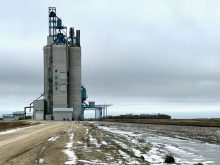Chicago | Reuters — U.S. grain and soy futures edged higher on Monday, with some wheat contracts rising more than one per cent as weather forecasts showed little rain relief for dry wheat crops in the Plains or drought-affected grain belts in major exporter Argentina.
Global benchmark Chicago Board of Trade May wheat was up 9-1/4 cents, or 1.4 per cent, to $5.09-1/4 per bushel and K.C. May hard red winter wheat was up 11-3/4 cents, or about two per cent, to $5.45-1/2 per bushel (all figures US$).
Read Also

Selling GMO tomato seeds to Canadian gardeners ‘reckless’ say advocates
Selling genetically-modified purple tomato seeds to home gardeners could raise the risk of contamination of organic vegetable varieties and hamper farmers’ ability to save their own seed, say a group of advocates.
“K.C. (wheat) is your leader and it’s due to the ongoing dryness in the central Plains. I don’t see anything in the forecast,” said EFG Group analyst Tom Fritz.
Wheat prices held near the highest levels since July with fields in states such as top wheat grower Kansas needing rain.
“Dry weather will continue across the western Plains this week, which will maintain significant dryness concerns for hard red winter wheat,” meteorologist Radiant Solutions said.
Investors also were squaring positions ahead of the U.S. Department of Agriculture’s monthly supply and demand report due on Thursday, in which analysts expect the government to show slightly larger U.S. wheat ending stocks. Analysts also predicted USDA would hike Brazilian soy output and lower soy output in Argentina.
Gains for soybeans and corn were more modest, with a strong dollar and uncertainty over U.S.-China trade relations encouraging the oilseed market to consolidate after last week’s rally.
CBOT May soybeans climbed 6-1/2 cents to $10.77-1/2 per bushel, near the multi-month high from Friday of $10.82-1/2. CBOT May corn was two cents higher at $3.87-1/4.
“Above all it is the drought in Argentina that is driving up prices. The Argentinian crop is set to be the worst in six years,” Commerzbank analysts said in a note.
The deepening drought in the Pampas grain belt has led forecasters to cut estimates for the forthcoming Argentine soybean crop, prompting investors to raise their long position in Chicago futures.
But analysts have also set an expected drop in Argentine output against a bumper crop being harvested in Brazil and the risk that international trade tensions could disrupt massive Chinese imports of U.S. soybeans.
U.S. President Donald Trump announced last week that he would impose hefty tariffs on imported steel and aluminum to protect U.S. producers, risking retaliation from major trade partners such as China, Europe and Canada.
— Michael Hirtzer reports on commodity markets for Reuters from Chicago; additional reporting by Colin Packham in Sydney and Gus Trompiz in Paris.















